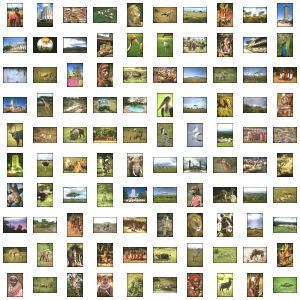Selected publications
See my Google Scholar page for a more complete list of publications, with citations.
Google work: visualization, metrics, eyetracking
I founded and led the quantitative user experience research team at Google. This work involves analyzing large-scale data (e.g. from usage logs or surveys) to generate insights about how products are being used. It also includes the definition and tracking of metrics to measure the impact of changes to the user experience, for example using the HEART framework.
C. Chapman and K. Rodden, Quantitative User Experience Research, Apress, 2023.
K. Rodden, Applying a Sunburst Visualization to Summarize User Navigation Sequences, IEEE Computer Graphics and Applications, 2014 [Abstract; PDF coming]
K. Rodden, H. Hutchinson, and X. Fu, Measuring the User Experience on a Large Scale: User-Centered Metrics for Web Applications, Proceedings of ACM CHI 2010 [PDF]
K. Rodden and M. Leggett, Best of Both Worlds: Improving Gmail Labels with the Affordances of Folders, Extended Abstracts of ACM CHI 2010 [PDF]
A. Kramer and K. Rodden, Word usage and posting behaviors: modeling blogs with unobtrusive data collection methods, Proceedings of ACM CHI 2008 [PDF]
I used to lead user experience research for web search, including using eye-tracking to study how people scan a search results page.
K. Rodden, X. Fu, A. Aula, and I. Spiro, Eye-mouse coordination patterns on web search results pages, Extended Abstracts of ACM CHI 2008 [PDF]
K. Rodden and X. Fu, Exploring How Mouse Movements Relate to Eye Movements on Web Search Results Pages, Proceedings of ACM SIGIR 2007 Workshop on Web Information Seeking and Interaction [PDF] [Supplementary Figures]
Post-PhD work: browser history and mobile search
Before Google, and after my PhD, I spent some time at Microsoft Research in Cambridge, working as a consultant to the Integrated Systems group, in collaboration with Alan Blackwell and Rachel Jones. Our projects included improving history mechanisms for web browsers, and exploring new web search interfaces for mobile devices.
R. Jones, N. Milic-Frayling, K. Rodden, A. Blackwell, Contextual Method for the Redesign of Existing Software Products, International Journal of Human-Computer Interaction, 2007, 22(1-2). Earlier version available as Microsoft Research Tech Report MSR-TR-2004-96 [PDF]
N. Milic-Frayling, R. Jones, K. Rodden, G. Smyth, A. Blackwell, and R. Sommerer, SmartBack: Supporting Users in Back Navigation, Proceedings of WWW 2004 [PDF]
K. Rodden, N. Milic-Frayling, R. Sommerer and A. Blackwell, Effective Web Searching on Mobile Devices, Proceedings of the 17th Annual Conference on Human-Computer Interaction (HCI 2003) [PDF]
Alan Blackwell and I also worked together to produce a new electronic edition of Ivan Sutherland’s 1963 PhD thesis on Sketchpad.
A. Blackwell and K. Rodden, Editors’ introduction to new electronic edition of Sketchpad, A Man-Machine Graphical Communication System by Ivan Sutherland, Technical Report 574, University of Cambridge Computer Laboratory, 2003 [PDF]
PhD research: image browsing
I did my PhD at the University of Cambridge Computer Laboratory. My research combined elements of human-computer interaction, information retrieval, image retrieval, and information visualization.
K. Rodden, Evaluating Similarity-Based Visualisations as Interfaces for Image Browsing, PhD thesis (and Technical Report 543), University of Cambridge Computer Laboratory, October 2001 [Abstract] [PDF]
I carried out experiments considering whether arranging a set of images on the screen according to their mutual similarity (so that images which are alike are placed close to each other) is helpful to the user when browsing the set.


The main experiment used graphic design students as the participants, with a task involving selecting photographs from a set to illustrate a given piece of text.
K. Rodden, W. Basalaj, D. Sinclair, and K. Wood, Does Organisation by Similarity Assist Image Browsing?, Proceedings of ACM CHI 2001 [PDF]
There are many ways in which image similarity can be defined; I used measurements based on low-level visual properties (such as colour and texture), and on textual captions. To construct the visualisations, I used multidimensional scaling.
K. Rodden, W. Basalaj, D. Sinclair, and K. Wood, Evaluating a Visualisation of Image Similarity as a Tool for Image Browsing, Proceedings of IEEE InfoVis’99 [PDF]
I was also interested in how people would organize and browse their personal photographs once the usage of digital cameras was more widespread, and conducted a six-month field study (in collaboration with AT&T Laboratories Cambridge) where the participants were given digital cameras and copies of AT&T’s Shoebox software. I analyzed usage logs, and interviewed the participants at the beginning and end of the study.
K. Rodden and K. Wood, How do People Manage Their Digital Photographs?, Proceedings of ACM CHI 2003 [PDF]
Earlier work: web navigation
In the summer of 1997 I worked with Matthew Chalmers as an intern at UBS Ubilab in Zürich, Switzerland. We developed a system to record users’ paths through the Web, using a form of collaborative filtering to recommend resources via sharing of paths.
M. Chalmers, K. Rodden, and D. Brodbeck, The Order of Things: Activity-Centred Information Access, Proceedings of the Seventh International World Wide Web Conference, 1998 [PDF]
The system was also featured in the book Digital Information Graphics by Matt Woolman.